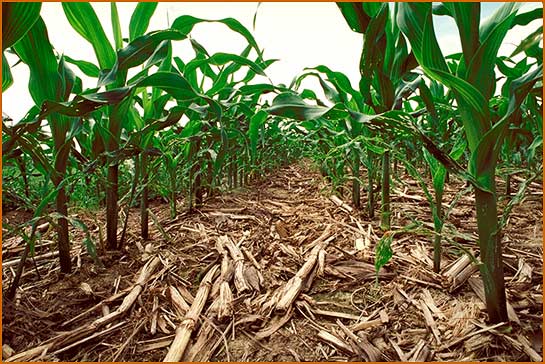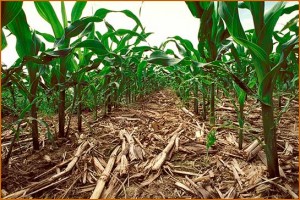June 25, 2014 – No plough, less heat! That is the lesson farmers are being taught to combat extreme heat. Using what is called no-till farming, sowing seeds on cropland that has not been ploughed, can lead to lower daytime temperatures by as much as 2 Celsius (3.6 Fahrenheit) degrees. That could make a life and death difference to crops and the humans and livestock on the land. Something this simple you think would be easy to implement. But farmers are creatures of habit and no-till methods are only catching on slowly even though there are many added benefits:
- Higher water retention meaning less irrigation and better drought resistance.
- Less erosion from wind and heavy rain, less need to contour the land, and better soil retention of organic matter and minerals.
- Reduced time between harvesting and sowing crops in areas where multiple harvests or year-round agriculture is practiced.
- Decreased use of machinery, fertilizer, insecticide, fungicide, herbicide and farm labour.
- Higher, more stable crop yields.
- Higher carbon retention and overall reductions in CO2 output.
No till practices have more than doubled in the last two decades and appear to be on an acceleration curve across all areas of the planet. In as 2010 study, the authors reported 2009 data showing 111 million hectares (274 million acres) of no-till farmland with fastest adoption in South America where almost 70% of cultivable land uses this practice. In the United States, although farmers occasionally leave fields after harvesting, it is common practice to occasionally put these fields to the plough. Compare the 111 million hectare number to the total amount of land currently used for agricultural production, 4.92 billion hectares (1.2 trillion acres), and you can see that no till remains an uncommon global practice.
Why does no-till reduce daytime peak temperatures? It is called the albedo effect. In not ploughing, sunlight is less likely to be absorbed into the surface soils where it converts to heat, warming the air above it. In fact no-till fields are 50% more reflective during peak summer months than fields that are tilled before planting.
During the hottest summer days, which have been getting hotter, a fluctuation of one or more degrees can make a big difference during a heatwave. And not just for the crops but also for the humans and livestock.
The research so far, done by Sonia Seneviratne, a climate scientist at the Swiss Federal Institute of Technology, points to a local effect, rather than a broadly distributed one. That may be in part because testing has been done for only a small area sample. Seneviratne believes a test over a larger area of no-till farming practices would be a useful next step to determine if this should become standard practice as our atmosphere continues to warm here in the 21st century.
Related articles across the web













